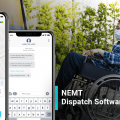Top Steps to Develop Mobile App Successfully

That’s why mobile app development has become such a critical skill for business owners. Whether you’re trying to develop mobile app for the first time or you’re equipped with some experienced mobile app developers, these tips can help you supercharge the development process.
Determine Your App’s Core Objective
Almost every great app can be condensed to a simple mission statement. Whether your goal is to revolutionize the dating world or change the way care hire services work, most apps can be expressed as a simple elevator pitch. The first thing you need to do is figure out what problem your app solves. Let this be your guiding principle, and keep an eye towards making every other stage of your development process center around achieving this goal.
Focus on the Necessities
One of the biggest problems that can affect a mobile app’s development is feature creep. The more you decide to pack into your app, the longer you can expect it to take and the more opportunities there are for something to go wrong. Then there’s the fact that a cluttered interface could potentially scare away your prospective user base. That’s why it’s important to focus on what your app needs to have and sideline the bells and whistles of things you want in the meantime. The great thing about app development is that it can continue well after the first version is released. That allows you to get a lean, clean product out the door faster and focus the attentions of your long term mobile app development on the direct feedback of your customers rather than on vague notions of what you think they might want.
Design Before Building
Anything worth doing right is worth doing with a plan, and that’s why any attempt to develop mobile app should begin with strong conceptualization. Much of the heavy labor will be accomplished in the actual coding process, and doing everything you can to minimize redundancies for your mobile app developers will speed up the process and make their lives significantly easier. A number of programs are available that you can use to prototype your design, but you can work through the design process even without dedicated tools. Place an emphasis on the workflows and user interface, and do whatever you can do visualize the final product. The better you can communicate what you want the final product to look like, the lower the likelihood that will be miscommunications between the idea makers and the builders.
Be Cognizant of Your Budget
Even if you have a rough prototype in place, chances are that things will change pretty dramatically in the development process. What looked good on paper might not present so well in practice, and your developers can be one of the best tools you have for determining what will work and what won’t. It can be highly useful to rely on user stories. With user stories, each prospective feature can be represented by how the user will benefit from them. While these aren’t as good as legitimate feedback from users who have already interacted with your platform, they can be a great barometer for the value of each feature. Once you have all of the prospective features in place, you’ll need to come up with a budget. This can be determined by working with your developers and breaking down each of the features involved according to the manpower you’ll need to actualize them.
Plan For the Future
Getting a great app out the door is an accomplishment to be proud of, but it’s just as important to be prepared for how your audience will respond and how it can grow in the months or years to come. It’s important to have a dedicated beta. First impressions are important, and high value quality assurance will improve the odds that your users will fall in love with your app from the start. But it’s just as important to make use of analytics tools. These can give you an impression not just of who is interacting with your app but how they’re interacting, and that kind of data can be critical if you’re looking for your app to have a long shelf life.
Other articles and publications:
Articles and publications of other companies:
- +1 (972) 454-4888
- 450 Century Parkway, Suite 250, Allen, TX 75287, USA
- jumpgrowth.com











